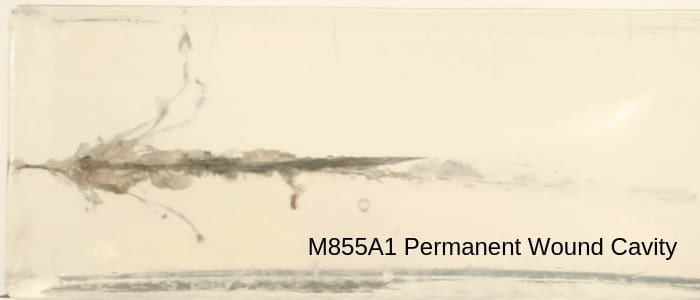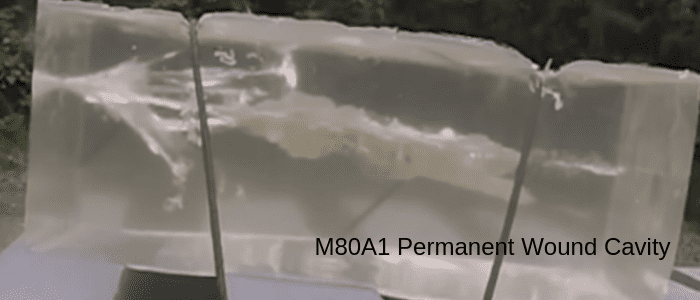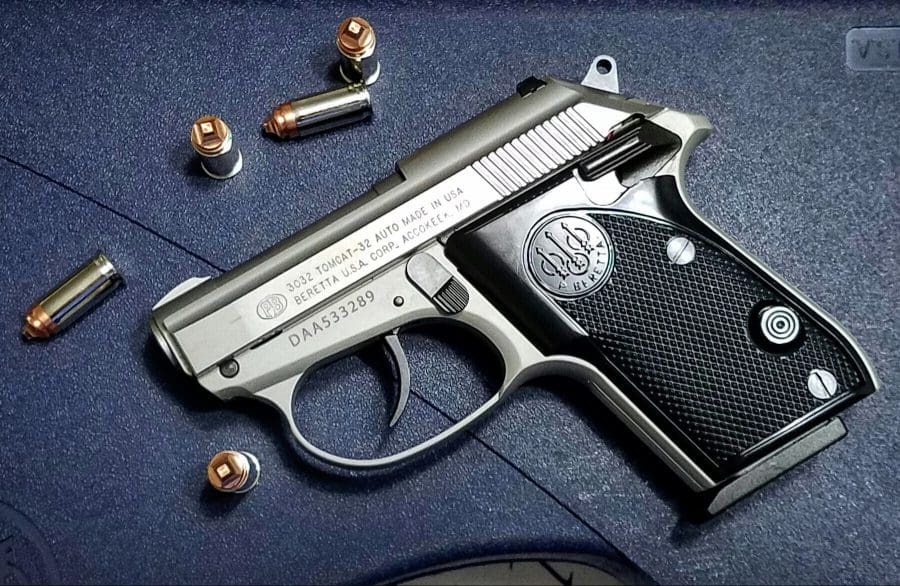By Matt Sandy
Yes, another 300 AAC Blackout vs. 5.56 NATO article. However, in this one, I’ll compare the two specifically by looking at their ballistics. Ballistics is a broad term that actually covers three subsections: Internal ballistics, external ballistics. Let’s look at all three.
The American-made 300 Blackout was Advanced Armament Corporation’s solution to the problem, “How do we get 7.62×39 performance in an M4/AR rifle with as little change to said platform as possible?” They started with the 300 Whisper, a wildcat cartridge. They got it standardized and approved by SAAMI before changing the name to 300 Blackout.
In order to keep this article at a reasonable length, we will be looking at the ballistics through a set of pre-determined filters. The primary weapon system will be an M4/AR-15 platform with an AAC upper using a 9-inch barrel and pistol length gas system. I will be comparing it against the 5.56 NATO and 7.62×39 Soviet when relevant, as the 300 Blackout is meant to replace one and match or surpass the other.
Cartridges like the 6.8 SPC and 6.5 Grendel aren’t relevant comparisons, because they require a different bolt face and different magazines resulting in decreased carry capacity. By comparison, 300 Blackout only requires a barrel change. From the military’s perspective, that’s ideal.
And it’s probably the most important thing to remember when looking at this cartridge and why it exists. The 300 BLK round is a 5.56 replacement, with 7.62×39 capabilities with minimal alterations required for the weapon system. Let’s look at how well AAC accomplished their goal by analyzing its ballistics. I will also give my opinion on the very simple question, “is it better than 5.56 NATO?”
Let’s dive in.
Internal Ballistics
Internal ballistics covers everything that occurs from the moment the firing pin ignites the primer until the bullet leaves the muzzle. Maybe the most significant application of this is barrel twist rate. In general, the longer and heavier the bullet is, the tighter the twist rate needed to stabilize it. AAC offers 1:7 in all three of their barrel lengths.
This tells me that AAC, the company that has fine-tuned their M4/AR-15 platforms to work with high velocity supersonic ammo and low velocity subsonic ammo, deems this the most versatile twist rate. If, however, you are building your rifle around a specific bullet weight and load, then twist rate is a valid consideration for optimizing that load. If you’re using lighter bullets a slower twist rate can give better performance.
External Ballistics
External ballistics is everything that happens to the bullet between the muzzle and the target. Trajectory, wind drift, velocity, etc. This is what most people refer to when they talk ballistics. The accompanying images show several different common loadings of 5.56 NATO, 7.62×39, and 300 BLK.
The data was generated using ballistic coefficients and muzzle velocities primarily from Hornady. I did this for two reasons.
First, Hornady is a reputable manufacturer. Second, they list all the information I need to generate the data. The muzzle velocities are an estimate because most published velocities use longer barrels like 20 or 24 inches. I subtracted 25 fps per inch until I reached the desired barrel length.
These aren’t supposed to be hard numbers, but general indications of how each cartridge performs. Each cartridge is subject to the same degree of error, since I will be doing the same math for each. Data was generated using the Applied Ballistics phone app, at sea level, on a 70-degree day, 50 percent humidity, a 10-mph crosswind for drift in 100-yard increments.
Supersonic Ammunition: I was surprised by what the data showed here. Across the board, the 300 BLK rounds were only minimally better if not worse than military grade 5.56. (NOTE: After reviewing comments from readers, the author sent us updated supersonic data, shown below).




The 5.56 had at least 500 FPS on the 300 Blackout for velocity, slightly decreased muzzle energy, a little less than half the bullet drop, and less wind drift. And when I say “slightly” decreased energy, I’m talking within 50 ft/lbs at any distance, with the 5.56 actually outperforming 300 BLK at some.
The 7.62×39 ammunition is basically identical to the 300 BLK ammunition. Despite using estimated muzzle velocities, I’m not really seeing any hint of the 300 BLK rounds being better by any significant margin, or at all. Supersonic 5.56 would be my first choice for longer shots.
Subsonic Ammunition: Here I included ammunition primarily from Engel Ballistic Research because they listed all the information I needed for subsonic loads. This is important because the Ballistic Coefficient of a bullet changes depending on the velocity. To be specific, the BC increases as the bullet velocity decreases.
So, using BCs generated from supersonic loads would give us less accurate trajectories than if we used BCs generated from subsonic loads. The 5.56 is the only exception. Atomic ammo doesn’t list the BC, so I carried over the M855A1 BC. Take that as you will. I also threw in 9mm and .45 since they are the primary competition for the subsonic, suppressed role in a short barrel platform.
The subsonic results were pretty similar to each other.



The 5.56 and 9mm fell short in the bullet energy department by roughly 100-200 ft/lbs across the board. This is expected, since the bullet weights are nearly half that of the others. The .45 had the most energy at the muzzle but quickly fell behind as the distance increased.
The velocities were extremely close for all except the pistol cartridges which finished roughly 200 fps slower than the rifle cartridges. The drop rates were also very similar, with the pistols again underperforming. The 220 gr 30-caliber bullets had the best overall performance. The 208 gr Hornady bullet is an odd exception. It had an extremely high published BC, which causes it to outperform the 220 gr bullets by a little.
The disparity in the BCs makes me think that either Engel is underestimating their BC or Hornady is overestimating theirs. Either way, the 300 BLK takes the win for subsonic loads thanks to its heavier bullet and better BC.
Terminal Ballistics
Terminal Ballistics is everything that happens between the bullet hitting its target and it finally coming to rest. I want to start by saying terminal ballistics is very complicated. There are a huge number of factors and variables that can’t be properly accounted for, and certainly not agreed upon.
There is, however, one element of bullet wounding that is universally accepted. When a bullet strikes a body, it will put a hole in that body slightly bigger than the diameter of the bullet. By this logic alone, 300 Blackout rounds are better than 5.56.
Tumbling and fragmentation increase the size of the wound, but the 300 BLK will always have a slight size advantage over the 5.56. When comparing the same bullet design, M855A1 vs M80A1, the 30-caliber cartridge is superior.

Don’t get me wrong, both will kill. And the M855A1 definitely has superior terminal ballistics to its predecessor, but it can’t outperform the larger 30-caliber bullets when comparing similar bullet designs.


Both images above are from The Wound Channel. The M80A1 photo isn’t as clean, but I think it still properly illustrates the difference in wound size between the two rounds. YouTube is full of ballistic gel test videos showing M855A1 and M80A1 performance, including this video which shows the M80A1s effectiveness in the 300 BLK platform.
https://youtu.be/DEIks1Y8KyM
I haven’t seen any photos or footage of how the new bullets perform at subsonic velocities, but it’s safe to assume that at worst, they don’t fragment – which puts us right back at the beginning where the bigger bullet causes the bigger wound.
This also means that, technically, 9mm is better than 300 BLK and .45 is the best. If only terminal ballistics were that simple, or I had more room to write. That being said, at close ranges with subsonic loadings, the .30 caliber bullet may be the best choice. It may not put the largest hole in the target, but it has better sectional density giving it superior penetration. This will help it defeat some barriers while maintaining lethal force better than the pistol cartridges.
Also, as AAC intended, if the fight suddenly shifts to longer ranges, it definitely has superior terminal ballistics at range. Furthermore, you could throw in a supersonic magazine that overwhelming surpasses the pistol calibers at range. From a terminal ballistics perspective, the 300 BLK seems to win due to its bullet diameter and range versatility.
I covered a lot, and still only touched on a lot of the topics brought up here. Especially terminal ballistics. Papers are written on that stuff. But, after looking at the numbers, AAC definitely succeeded in seamlessly putting 7.62×39 performance into a standard AR-15 platform. Is it better than 5.56? For range use, I’m going to say no. 5.56 is the best option for reaching out and touching something.
Other than that, I’m leaning towards 300 Blackout as the better option. Especially in an SBR PDW-type role. The 5.56 barely fills that role in a subsonic capacity, and 300 BLK has better accuracy and range options than pistol calibers.
I don’t think 300 BLK replaces 5.56 NATO. The true answer is mission-dependent, but at least we have more viable options.
Matt previously served five years in the Army with 2nd Ranger battalion, 75th Ranger Regiment and is currently a gunsmith at The Range at Austin. He also competes in both USPSA and PRC matches.









I guess this is how things go now? Writers just make things up? According to Hornady and Sierra, only a 24 grain (max load) of Ramshot TAC in a 20″ barrel will push a 77 grain SMK to 2600-2700 FPS. This entire article is complete crap. Welcome to the Democrats America. Fact is a 9″ 300 black out shooting Hornady 110 Vmax are 2432 fps (according to my actual chrono) has more energy than 556 up to and INCLUDING a 16″ barrel. Do you seriously think you can make up statistics and verifiable data? Pathetic. I wont be reading another article from this site… ever